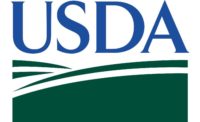Wild boar, razorback, feral hog, wild pig—those are just a few of the names for one of the most destructive, formidable invasive species in the United States. Feral swine adapt to just about any habitat, have few natural enemies, and reproduce at high rates. Estimates vary, but their population likely exceeds 6 million nationwide. They cause tremendous damage—up to $2.5 billion annually—to crops, forestry, livestock, and pastures. Feral swine also present great risks to human health and safety. They can harbor and transmit dozens of parasites and diseases—such as pseudorabies, which is fatal to cats and dogs and a threat to domestic swine—as well as foodborne illnesses like E. coli, toxoplasmosis, and trichinosis.
To combat these threats, APHIS established the National Feral Swine Damage Management Program in 2014. APHIS’ Wildlife Services oversees the program. The program’s overarching goal is to protect agricultural and natural resources, property, animal health, and human health and safety by managing feral swine damage. APHIS collaborates with many stakeholders—including States, Tribes, other Federal agencies, universities, and the public—to accomplish this goal. The Agency also works with Canada and Mexico to support cross-border activities and share information on feral swine disease monitoring and control efforts.
To augment ongoing feral swine activities, the 2018 Farm Bill provided funding for APHIS and USDA’s Natural Resources Conservation Service to create the Feral Swine Eradication and Control Pilot Program. The pilot program targets areas with high feral swine populations, mostly in the southeastern United States.
Successes to date
The National Feral Swine Damage Management Program has been instrumental in reducing the number of these animals and the damage they cause. The program has worked with 41 states and three territories so far and has removed all feral swine from 11 States (CO, ID, IA, MD, MI, MN, NJ, NY, VT, WA, WI). In six of those states (CO, IA, MN, WA, WI, VT), Wildlife Services is monitoring conditions for 2 years to confirm eradication. Working with Wildlife Services researchers, program officials have also made great strides in developing and evaluating tools and techniques for preventing feral swine damage, including baits, traps, and aerial operations. In addition, they assess property damage, estimate feral swine populations, model disease spread, and educate the public about the impacts of these invasive animals.
Together, APHIS and its partners aim to limit the expansion of feral swine populations and the damage they cause and—where feasible—eradicate them.
Source: USDA-APHIS





